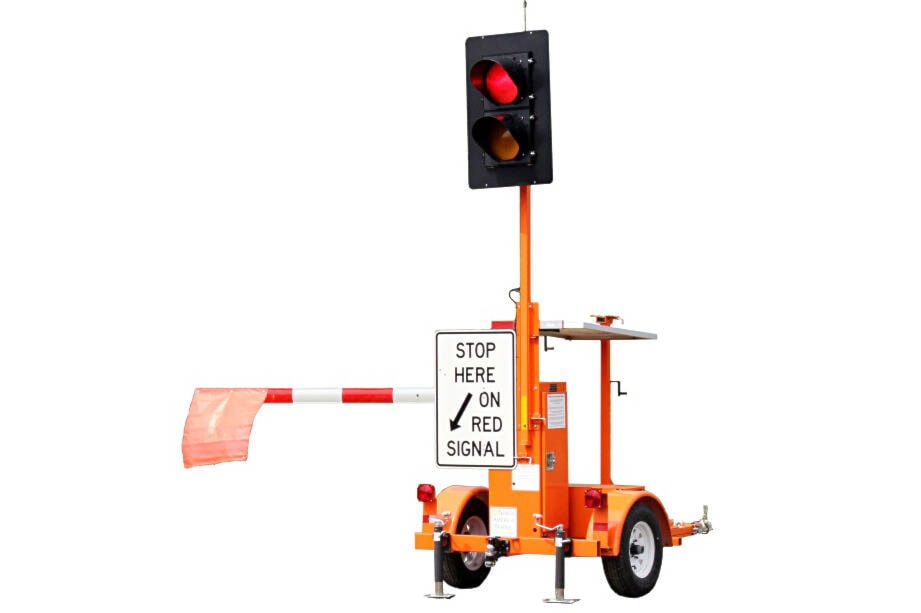Anyone who travels the highways and byways of B.C. is familiar with the flaggers at construction zones, who are out in all weathers to ensure the safety of drivers and construction workers. However, a new sort of flagger is set to become more common, particularly with summer roadworks getting closer: Automated Flagger Assistance Devices (AFADs), which provide effective traffic management and keep human traffic controllers out of harm’s way.
Many drivers may not be familiar with what AFADs are and how they work, and that is causing confusion at some work zones. AFADs are portable, remotely-operated temporary traffic control equipment with high visibility signage. They feature red and yellow traffic lights and a gate-arm with a fluorescent orange or red flag that moves up and down, and which extends into the travel lane. The device can only be used on two-lane, two-way roadways and on multilane roadways that have been reduced to one lane.
The benefit of AFADs is that they are portable, easy to set up, and small enough to be used in areas where the road has narrow shoulders. Most importantly, they are highly visible to drivers. Studies in the US show that AFADs lower drivers’ approach speeds and encourage them to stop further back compared to human flaggers positioned on the roadway.
Something that AFADs are not is robots. They do not operate on their own; they require at least one traffic control person (TCP) with a remote control device, who can position themselves well away from moving traffic and use the AFAD as an extension of their arm. Work zones with a greater distance between traffic queues require two people to operate the AFADs, because each person must have an unobstructed view of their flagging device.
Depending on the work zone in question, there could be two people at a distance who are each operating an AFAD (one at each end of the site), or there could be an AFAD at one end and a TCP with a paddle controlling traffic at the other.
The Ministry of Transportation has been receiving reports of drivers being confused by AFADs, or ignoring them. There have been instances of people driving around the closed gate, and even driving right through it, which is extremely dangerous given that AFADs are usually used to control single lane alternating traffic, giving oncoming vehicles nowhere to go.
Drivers need to be aware that AFADs are operated by traffic control people who are at the site, albeit at a distance. They can see the AFAD, and traffic, at all times. If you are waiting in front of an AFAD with its gate down and red light shining, and there is no oncoming traffic, do not assume it is malfunctioning, and do not drive ahead. Wait until the red light switches to yellow and the gate rises; only then is it safe to proceed.
AFADs are there to make traffic control safer for workers and more effective for travellers. With so many benefits to using them, drivers can expect to see more of them on the roads in the future.
editorial@accjournal.ca
Like us on Facebook and follow us on Twitter
